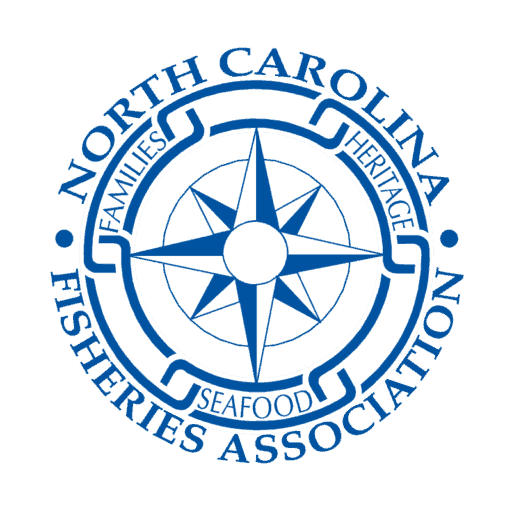Marine Fisheries Commission Meeting Recap
The North Carolina Marine Fisheries Commission (MFC) met this past week in Beaufort. NCFA was right there in the thick of it like always making sure to fight for your right to keep fishing! We were able to give public comment, talk with Division of Marine Fisheries (DMF) staff and the MFC letting them know your concerns.
Striped Mullet
As was mentioned in the last Weekly Update, we at NCFA discovered that 12 additional hours were added to the weekly mullet closure decision document after the February MFC vote. After talking with DMF staff, rewatching the last MFC meeting, and digging through the meeting materials we did determine that there was one paragraph that was added to the draft fishery management plan (FMP) before the February MFC meeting that mentioned this additional closure time.
However, through NCFA’s research we found no mention of these additional hours in any public meetings. We were sure to let the MFC and DMF staff know about all of our research. The MFC ultimately voted against the additional hours being added to the closure.
The final motion that was made and passed was:
To manage commercial harvest with an:
11:59 p.m. Friday to 12:01 a.m. Monday closure from Jan. 1 to Sept. 30,
and
11:59 p.m. Friday to 12:01 a.m. Tuesday closure from Oct. 1 to Dec. 31
The stop net fishery will be managed with the same measures as the rest of the striped mullet fishery.
To manage the recreational fishery with:
Individual bag limit of 100 fish,
With a vessel limit of 400 fish.
With an exception for For-hire Vessel Operations to possess a bag limit for the number of anglers fishing up to the 400-fish maximum (including in advance of a trip)
These new rules will be implemented through proclamation.
SAV Shrimp Trawl Closure Lines
Thanks to you all coming out and NCFA fighting hard and addressing your concerns, the SAV Shrimp Trawl Closure Lines was voted to be removed from the Shrimp FMP Amendment 2 as an action item.
The motion passed by the MFC also said that DMF will work with the Habitat and Water Quality Advisory Committee (AC) to examine and develop more comprehensive options to protect identified SAV habitat related to all activities, not just trawling.
As we understand it, the possibility of regulating shrimp trawling, and possibly other activities, to protect SAV is not off the table.
We are assuming (with the approval of this motion) that if the Habitat and Water Quality AC makes recommendations to take actions to protect SAV, it would then be brought to the MFC to decide whether or not to initiate rule making.
Blue Crab Stock Assessment
The Blue Crab Stock Assessment and Adaptive Management options were presented to the MFC. It was a rather short presentation which concluded with a stock assessment that did not pass peer review and the DMF declaring with 100% certainty that the stock is overfished with overfishing occurring.
Personally, I am very disappointed that we cannot produce a valid stock assessment for the most valuable commercial fishery in the state. I also have much heartburn hearing a 100% certainty on anything in fisheries management especially with a stock assessment that did not pass peer review.
As for Adaptive Management, it appears DMF will be using the Management options developed after the 2018 stock assessment when presenting management options to the MFC at their August meeting. Stay tuned.
Atlantic Bonito
A motion was passed to develop an issue paper for Atlantic Bonito along with proposed rule language. Stay tuned.
If you have any questions or concerns, please reach out.
Thomas Newman
Fisheries Liason
2024 Recreational Southern Flounder Season
It was announced last week that the recreational flounder season will not open for harvest in 2024, due to that sector exceeding the recreational quota for two consecutive years.
In May of 2022, the Marine Fisheries Commission (Commission) adopted Amendment 3 to the Southern Flounder FMP. With the adoption of Amendment 3, the Commission implemented a quota for both the recreational and commercial fisheries, split 70% commercial and 30% recreational for 2022-2024, 60% commercial and 40% recreational for 2025, and 50% commercial and 50% recreational from 2026 on. The Commission also required pound for pound payback on annual overages for both sectors, meaning every pound of flounder exceeding the annual quota, caught by either sector in any given year, will be deducted from that sectors quota the following year.
The quota accounts for total removals, not just harvest, meaning both estimates of harvest and dead discards are combined to estimate the total pounds of flounder killed by each sector and that total estimate of mortality is used to determine if the quota was met or exceeded.
The Division of Marine Fisheries (DMF) had determined that recreational removals have exceeded the quota in both 2022 and 2023, and after deducting the 2022 overage from the 2023 quota, and the 2023 overage from the 2024 quota, there is not enough quota left to allow harvest in 2024.
It’s important to remember that while both harvest and dead discards are accounted for in the quota, only harvest is regulated, meaning that recreational anglers can, and do target flounder and participate in catch and release flounder tournaments outside the harvest season.
This catch and release mortality, outside the harvest season, is a major source of mortality and a big reason why the harvest season has been closed.
Upon learning of the closure many anglers were upset and understandably so.
Personally, I have mixed feelings about the recreational harvest closure.
On one hand, I believe the recreational sector has been treated unfairly in regard to how the state monitors their removals and the NCFA raised this concern to the Commission when they were considering Amendment 3. DMF utilizes data from the Marine Recreational Intercept Program (MRIP) to estimate recreational effort, harvest, and discards for coastal species such as Flounder.
MRIP data is also used for managing the recreational Southern flounder quota, despite the fact that MRIP surveys were not intended or designed to support in-season quota monitoring. Simply put, the design of the survey does not collect data with the level of precision needed for monitoring and managing a quota, especially not over very short periods of time, such as a two-week harvest season.
To make matters worse, for species like Southern flounder, which are often caught in “Inland Waters”, MRIP may be missing a significant percentage of the catch, as the survey only occurs in “Coastal Waters”.
This concern was multiplied four-fold in 2023, when the Wildlife Resources Commission (WRC) adopted rules for Inland and Joint waters which allowed anglers to harvest flounder outside of the coastal harvest season, with a four fish bag limit rather than 1 fish as approved by the Marine Fisheries Commission.
This extension of the harvest season, increased bag limits, and lack of data collection in Inland waters only served to compound the State’s inability to accurately monitor recreational removals of Southern flounder and has the potential to jeopardize the long-term viability of the stock.
Of course, even if MRIP could capture accurate removal data, it still would not prevent overages and harvest closures as the data is not available in “real time”, meaning it’s months after the harvest season before managers know if the quota has been exceeded.
The truth is, the recreational sector has been unfairly required to adhere to a quota and payback overages which the State cannot either monitor or prevent, which makes the harvest closure pretty hard to accept.
On the other hand, the recreational sector has likely far exceeded their quota in dead discards alone, which DMF has knowingly underestimated. While MRIP does provide an estimate of the number of flounder discarded by anglers, it does not provide weight estimates for those fish as they are never actually observed by MRIP samplers.
This presents an obvious problem when managing the stock by pounds of total removals, rather than numbers of fish, which is what the DMF chose to do. To overcome this hurdle, DMF utilized data from a South Carolina study and applied an average weight of 0.21 pounds (roughly one-fifth of a pound) to all recreational discards, for every year of the stock assessment and every year since.
I doubt that, even before the harvest seasons were set, the average flounder released by NC anglers weighed just one-fifth of a pound, but I am absolutely certain that with a two-week harvest season and eleven and a half months of mandatory catch and release the average discarded flounder weighs far more than 3.36 ounces!
That said, the recreational sector alone is quite possibly removing more pounds of flounder annually than the Division says both sectors can sustainably harvest.
For example, if the numbers of flounder MRIP estimates were killed by anglers in 2022 is accurate, and the average weight of a discarded flounder was just 1.5 pounds, then recreational anglers exceeded their quota by more than three times, essentially killing the entire combined quota for both sectors that year.
But again, we don’t know if MRIP estimates are accurate, too high or too low!
We don’t know how many fish were being harvested from Inland waters and being missed by MRIP prior to the stock assessment of after! We don’t even know what the average weight of a recreationally discarded flounder is, only that 3.36 ounces is absurd!
Some of this uncertainty could have been avoided if the State had managed this fishery in numbers of fish rather than pounds, implemented mandatory reporting for recreational flounder, and avoided conflicting rules between the WRC and MFC, but even then, with a 72% reduction a recreational harvest closure was an absolute certainty.
The truth is, without managing and effectively controlling recreational dead discards, harvest closures in this fishery and many others are inevitable!
Decisions made by multiple State entities have put both sectors in a no-win situation, and, if the stock is truly struggling, may have jeopardized the long-term viability of this fishery.
While I firmly believe that no citizens’ access to this resource should be jeopardized simply because the State is unable or unwilling to properly monitor and manage the fishery, I also believe that accountability by both sectors is essential and required by law.
Sadly, the State’s failure to properly monitor, manage, and control recreational effort, harvest, and discards has cast a huge shadow of doubt on the Southern flounder stock assessment, management strategy, and the DMF estimates of escapement.
If the State is going to hold the public accountable for our actions, it’s only fair that we do the same for the State!
While I sympathize with those anglers who won’t legally be harvesting flounder this year, I can’t help but wonder how they didn’t see this coming.
In the meantime, while many anglers are sitting home this fall unable to harvest a flounder, others will be holding catch and release flounder tournaments, blaming gill nets and trawls, and pointing out that the commercial season is not closed, as a way of drawing attention away from the State’s true failures!
Glenn Skinner
NCFA, Executive Director
LEGISLATIVE UPDATE: 5.27.2024
GENERAL ASSEMBLY
I was at the General Assembly the week before last to work on an issue for this session. It was looking good for them to be out by July 4th, but not so sure now due to some budget disagreements between the Senate and House. I don’t expect any controversial fishing issues to come up, but you never know.
God bless,
Jerry

